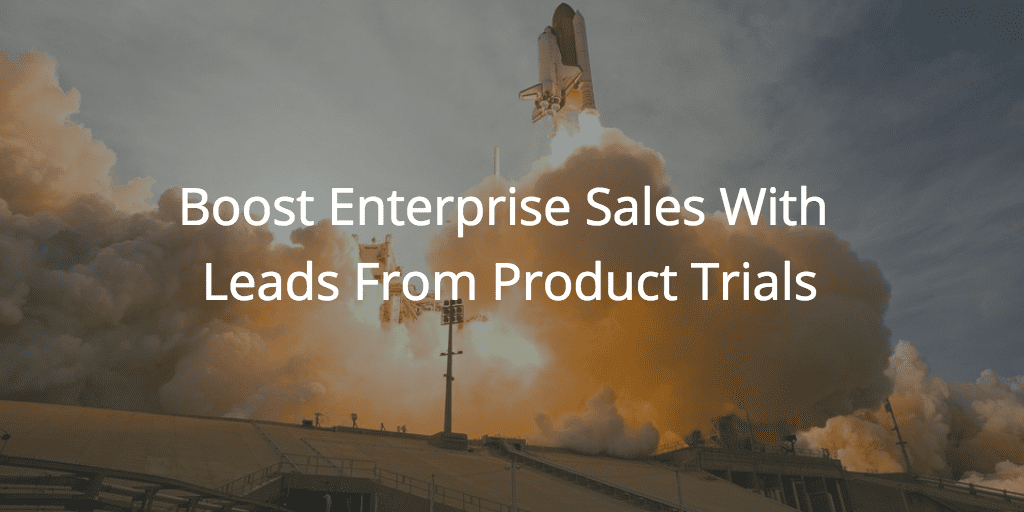A majority of SaaS companies that I’ve built products for have brought their products to market with a sales-led G2M motion.
Aptrinsic is now Gainsight PX! Gainsight PX helps your team deliver superior product experiences while Gainsight’s customer success platform helps to ensure customers are receiving business value from the product.
The sales reps would source new customers through outbound efforts and engaging their professional network. This method was great when we were trying to find product-market fit as the sales reps were close to the customer and we had easy access to interview the customers we engaged with. However, as our business grew we ran into challenges efficiently scaling our G2M efforts. We did all the right things. We invested more in marketing and reduced the size of the sales team and as a result, gained some customer acquisition cost (CAC) efficiencies. Marketings goals were to get more customers speaking with sales reps. Once the deal was done, the customer then got access to our product.
We thought we had it all figured out, but a new problem emerged. There was a growing gap between what customers thought our product could do for them and what it actually did. As a result, we now struggled with keeping our top-line ARR as our customer churn rates were too high. We were stuck in the SaaS grind of acquiring customers knowing that we couldn’t serve them well. We beefed up our customer success organization, trying to patch the revenue leak and ended up increasing our operational costs to deliver our product.
Many SaaS companies find themselves in this same situation and I want to share there is hope.
To get out of the SaaS grind, you must address the customer expectation gap by getting customers into your product earlier in the buying cycle. This is achieved by offering either a free trial version of your product or providing access to your product during a POC period.
To make this transition both effective and efficient from a cost perspective, you need to update your marketing and sales operations to account for leads who are in a trial period by:
1. Mapping buyer journey to sales process
With your current process, you track a lead’s lifecycle in your marketing automation and CRM systems. Using this setup, you set the following lead statuses along the way; Lead, MQL, SQL, Opportunity, Customer. You now need to incorporate a new state; where the lead is in a trial state within your product, either having started a free trial or have been provided access to a POC.
The first step is to decide collectively between your marketing, product and sales team how to categorize a user who has signed up for a trial. Should they be considered a lead? When should sales engage? When do they qualify as an opportunity?
Given you are aligning the activities across multiple departments, it’s recommended you start by documenting your buyers journey and how it aligns with your sales process. For each stage in the process, who is responsible for what activities. With this shared understanding you can now paint the process together on how to incorporate trial users into this process.
Find below a simplified example where each stage in the buyer journey is mapped and how the trial users can be incorporated. The goal is to align your teams and provide visibility into conversion rates at each stage to know where to optimize the process.
2. Measuring Product Qualified Leads™
Not all trial user are ideal candidates to become customers and as a result, you don’t want your sales teams to engage deeply with every user who signs up for a trial account. Just as you had implemented the concept of Marketing Qualified Leads based on the person’s demographics, firmographics, and marketing content consumption, you now can create the equivalent based on the features they use in your product.
Your product’s role just got much more important to the sales process.
You now want to define the set of features your customers can use to realize value, also known as the “first mile of product”. When your trial user adopts specific features, you can then categorize them as a Product Qualified Lead™. When a trial user reaches the defined threshold of product feature activity, you can then notify your sales team to engage.
3. Creating the Product & Sales Handoff
This step is where your planning meets your execution. Now that your teams are aligned on the process and you’re able to use your product to identify qualified leads, you need to make it easy for your sales teams to know when a trial user is ready to buy.
In your CRM, you need to have the information you sales teams need to properly engage with the lead. In addition to the demographic and firmographic information on the trial users, you will want to provide your sales team with what features they used in your product. Triggered alerts can be sent to lead owners when trial users become product qualified and specific views can be created to help prioritize their engagements.
Armed with this information, your sales team now have a more complete picture of what challenges the prospect is looking to address with your product and can offer the best package to fit their needs. You have also allowed your customer to realize the value of your product first-hand and set value expectations to make them a happy life-long customer.
In this article, we cover the marketing and sales operations changes to incorporate a free-trial or POC within your enterprise sales process. For a complete guide to using your product to accelerate growth, download a free copy of our book Mastering Product-Led Growth.

